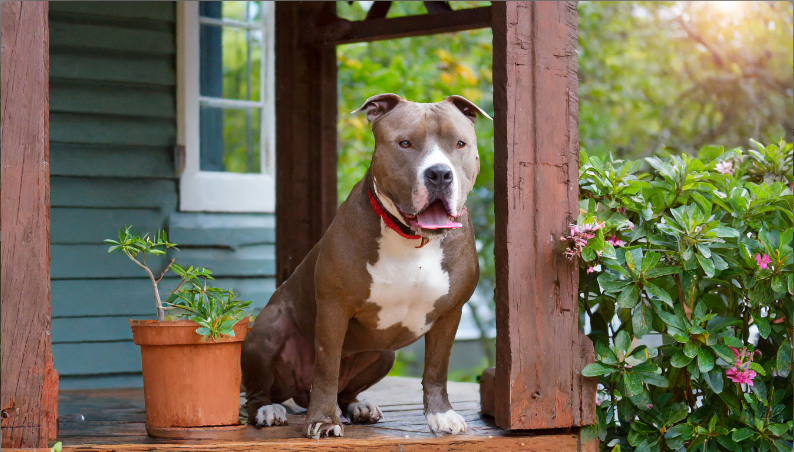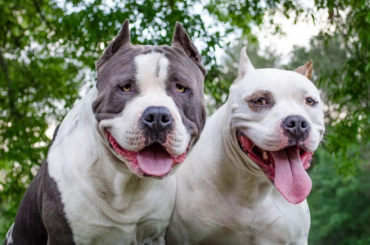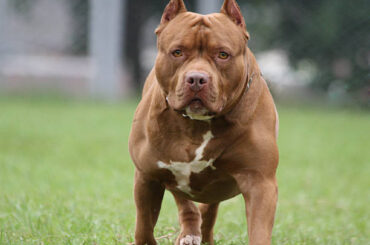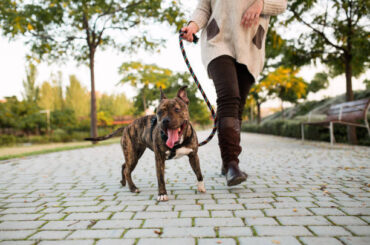Understanding your Pitbull’s body language is crucial in determining their comfort level around children. Dogs communicate through various cues, and recognizing signs of discomfort allows you to take proactive steps to ensure a safe and positive environment. Here are some common signs that your Pitbull may not be comfortable around children:
1. Stiff Body Language:
- Tense Muscles: If your Pitbull’s muscles appear stiff, especially along the back and neck, it may indicate discomfort or tension.
- Frozen Posture: A frozen or rigid posture suggests unease. Pay attention to whether your dog is avoiding movement or exhibiting a lack of flexibility.
2. Avoidance:
- Turning Away: If your Pitbull consistently turns away from children or tries to avoid their presence, it could be a sign of discomfort.
- Moving Away: Frequent attempts to move away or create distance from children suggest a desire to avoid interaction.

3. Elevated Hackles:
- Raised Fur on the Back: Raised hackles, the fur along the back, can indicate arousal, fear, or discomfort. Elevated hackles may be accompanied by other signs of stress.
4. Excessive Panting or Drooling:
- Stress-Related Panting: If your Pitbull starts panting excessively in the presence of children, it may be a sign of stress or anxiety.
- Drooling: Excessive drooling, especially when not related to physical exertion or hunger, can be a stress response.
5. Yawning or Lip Licking:
- Stress Signals: Frequent yawning or lip licking can be stress signals in dogs. If these behaviors occur in situations involving children, it’s essential to monitor the overall comfort level.
6. Ears Pinned Back:
- Tight or Pinned Ears: Pinned-back ears can indicate fear or discomfort. If your Pitbull’s ears are consistently held tightly against their head, it may be a sign of unease.
7. Whale Eye:
- Wide Eyes: A “whale eye” occurs when you can see the whites of your dog’s eyes. This can indicate anxiety or a feeling of being cornered or threatened.
8. Growling or Snapping:
- Vocalization: Growling, snarling, or snapping are clear signs of discomfort and a warning that your Pitbull is feeling threatened. Take immediate steps to create distance.
9. Tail Position:
- Tucked Tail: If your Pitbull tucks their tail between their hind legs, it’s a sign of fear or submission. This may happen if they feel uneasy around children.
10. Excessive Vocalization or Barking:
- Nervous Barking: Constant barking or vocalization in the presence of children may indicate nervousness or discomfort. Pay attention to the pitch and frequency of the barking.
11. Body Turned Away:
- Avoiding Eye Contact: If your Pitbull avoids making eye contact with children and turns their body away, it could be a sign of unease.
12. Hiding or Seeking Refuge:
- Finding a Hideaway: If your Pitbull seeks refuge in a secluded area or tries to hide from children, it’s a clear sign that they are uncomfortable.
13. Raised Body or Hair on Back:
- Raised Back: A raised back, similar to a cat’s arched back, can be a defensive posture and may signal discomfort or fear.
Conclusion:
It’s crucial to be vigilant and observe your Pitbull’s behavior around children. If you notice any signs of discomfort or stress, take proactive steps to create a positive and controlled environment. Always prioritize the safety and well-being of both your dog and the children, and seek professional guidance if needed to address any behavioral concerns.






